
The mistletoe tyrannulet a very small passerine bird in the family Tyrannidae, the tyrant flycatchers. It is found from Guatemala and Belize to Colombia.

The plain inezia, or plain tyrannulet, is a species of passerine bird in the family Tyrannidae, the tyrant flycatchers. It is found in Argentina, Bolivia, Brazil, Paraguay, and Peru.

The buff-banded tyrannulet is a species of bird in subfamily Elaeniinae of family Tyrannidae, the tyrant flycatchers. It is found in Argentina, Bolivia, and Peru.

The white-tailed tyrannulet is a species of bird in subfamily Elaeniinae of family Tyrannidae, the tyrant flycatchers. It is found in Colombia, Ecuador, and Peru.

The white-banded tyrannulet is a species of bird in subfamily Elaeniinae of family Tyrannidae, the tyrant flycatchers. It is found in Bolivia, Colombia, Ecuador, Peru, and Venezuela.

The southern mouse-colored tyrannulet is a species of bird in subfamily Elaeniinae of family Tyrannidae, the tyrant flycatchers. It is found in Argentina, Bolivia, Brazil, Paraguay, Peru, and possibly French Guiana and Suriname.
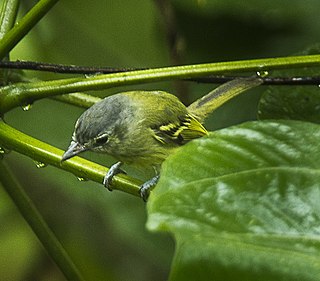
The ashy-headed tyrannulet is a species of bird in subfamily Elaeniinae of family Tyrannidae, the tyrant flycatchers. It is found in Colombia, Ecuador, Peru, and Venezuela.
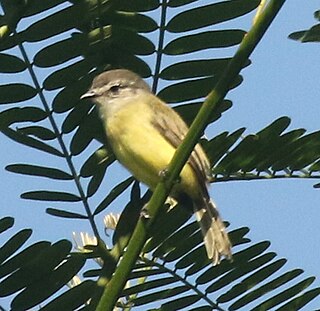
The sooty-headed tyrannulet is a species of bird in subfamily Elaeniinae of family Tyrannidae, the tyrant flycatchers. It is found in Brazil, Colombia, Ecuador, French Guiana, Guyana, Panama, Peru, Suriname, and Venezuela.
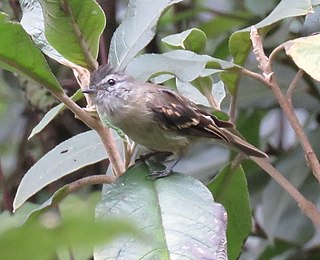
The tawny-rumped tyrannulet is a species of bird in subfamily Elaeniinae of family Tyrannidae, the tyrant flycatchers. It is found in Bolivia, Colombia, Ecuador, Peru, Venezuela, and possibly Argentina.

The Panama tyrannulet or yellow-green tyrannulet is a species of bird in the family Tyrannidae, the tyrant flycatchers. It is endemic to Panama.
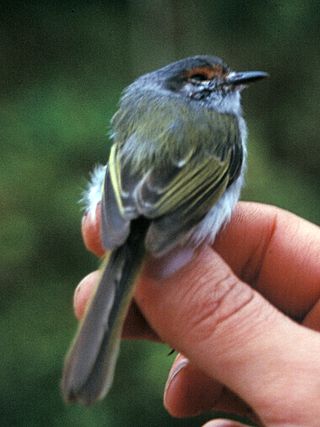
The rufous-browed tyrannulet is a species of bird in the family Tyrannidae, the tyrant flycatchers. It is found in Colombia, Costa Rica, Ecuador, Panama, Venezuela, and possibly Peru.

The Bolivian tyrannulet is a species of bird in the family Tyrannidae, the tyrant flycatchers. It is found in Bolivia and Peru.

The golden-faced tyrannulet is a species of bird in the family Tyrannidae, the tyrant flycatchers. It is found in Colombia, Ecuador, Peru, and Venezuela.
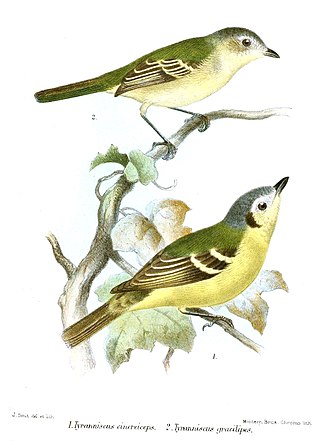
The slender-footed tyrannulet is a species of bird in the family Tyrannidae, the tyrant flycatchers. It is found in Bolivia, Brazil, Colombia, Ecuador, Peru, and Venezuela.

The Peruvian tyrannulet is a species of bird in the family Tyrannidae, the tyrant flycatchers. It is endemic to Peru.
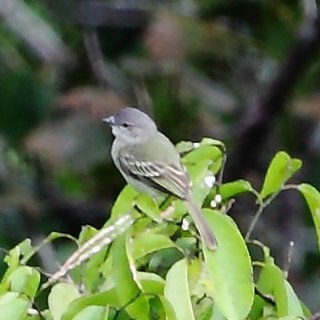
The Guianan tyrannulet is a species of bird in the family Tyrannidae, the tyrant flycatchers. It is found in Brazil, French Guiana, Guyana, Suriname, and Venezuela.
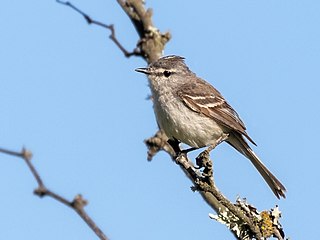
Straneck's tyrannulet, also known as the monte tyrannulet and grey-crowned tyrannulet, is a small species of bird in the family Tyrannidae, the tyrant flycatchers. It is found in Argentina, Bolivia, Brazil, Paraguay, and Uruguay.

Coopmans's tyrannulet is a species of bird in the family Tyrannidae, the tyrant flycatchers. It is found in Colombia and Venezuela.
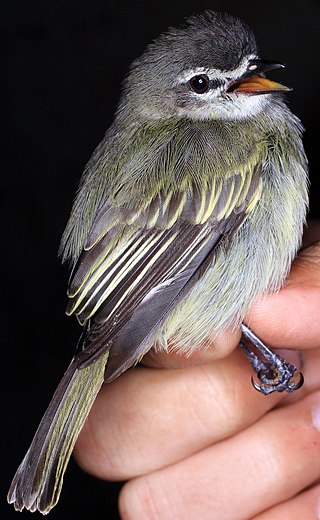
The spectacled tyrannulet, also known as the specious tyrannulet, mountain tyrannulet, and Venezuelan tyrannulet, is a small passerine bird in the family Tyrannidae, the tyrant flycatchers. It is found in Colombia and Venezuela.

The northern mouse-colored tyrannulet is a species of bird in subfamily Elaeniinae of family Tyrannidae, the tyrant flycatchers. It is found in Colombia, Costa Rica, Ecuador, Guyana, Panama, Trinidad, Venezuela, and possibly Brazil, French Guiana, and Suriname.























